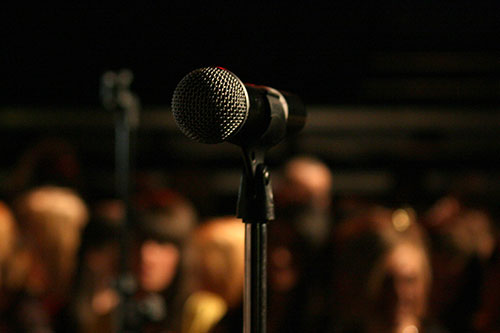As the copy chief here at Ooligan Press, I look at a lot of writing. Tip sheets, blog posts, blurbs, you name it. In fact, my work here at Ooligan has been the most thorough crash course in editing that I could have asked for. (If you’re on the fence about this program but have an inkling that editing might be your passion in life, dive in with both feet. Seriously.) And while I’ve read and continue to read numerous books on the art of editing and writing, in my work at Ooligan, I find myself most frequently leaning on an editing tip that was thrown my way back in high school. Read it out loud.
At first glance, “read it out loud” feels almost feels trite. After all, it looks suspiciously like a phrase a person in charge uses when they don’t actually know how to help. And yet a quick search for why this trick works yields innumerable results. Copywriter Erin Feldman declares that the idea of reading writing out loud is “a principle by which I live and breathe,” and while her wording might be dramatic, she’s not alone in her passion. Jane Friedman, co-founder of Open Road Integrated Media, explains that although we often include fluff when we write, “reading something out loud has an unusual way of bringing this to your attention.” In other words, reading a piece of writing out loud forces you to read every word—even the ones that need to be cut. When we read in our heads, our brain can often skim or skip over sections that are less interesting or that aren’t holding our attention. And while editors shouldn’t start deleting every word we skim over on our first pass through a piece of writing, there is value in knowing what sections aren’t working quite as well as they should. Reading out loud can help identify these areas.
Reading out loud can also help you become better accustomed to the flow and rhythm of the writing. While this is an important tip for authors to consider as they hone in on their manuscripts, it’s perhaps even more important for editors. Before I edit anything at Ooligan, I have to become familiar and comfortable with the unique style and voice of the writer—the last thing I want to do is strip away that uniqueness in my eagerness to follow every comma rule to a tee. When we read out loud, Robert Wood explains that it works much like “you can hear a missed beat or wrong chord in music,” enabling editors to become familiar with their writer’s voice in a new way. Author Jane Yolen argues that “the eye and ear are different listeners. So as writers, we need to please both.” Editors are no different.
If this has piqued your interest, I would encourage you to start researching other books, blogs, and resources regarding writing and editing. The Subversive Copyeditor by Carol Fisher Saller is an excellent place to start, as is The Copyeditor’s Handbook by Amy Einsohn. (Just remember that just like “read it out loud” is not the secret answer to becoming an editor, neither is reading any single editing guide or blog.) Now start reading your writing out loud. You’ll only feel crazy the first time you try it.

